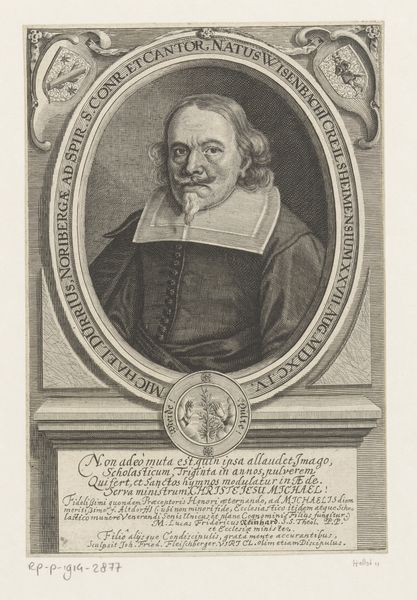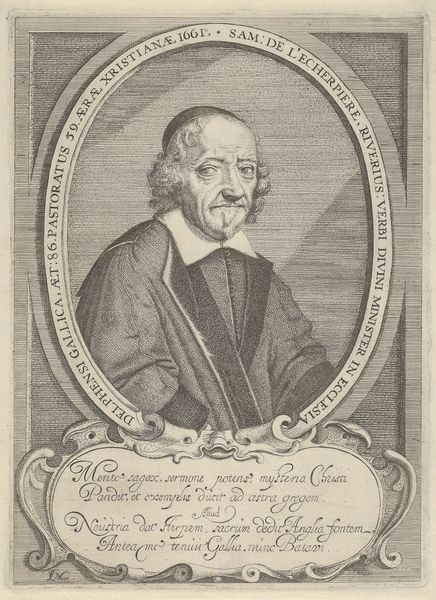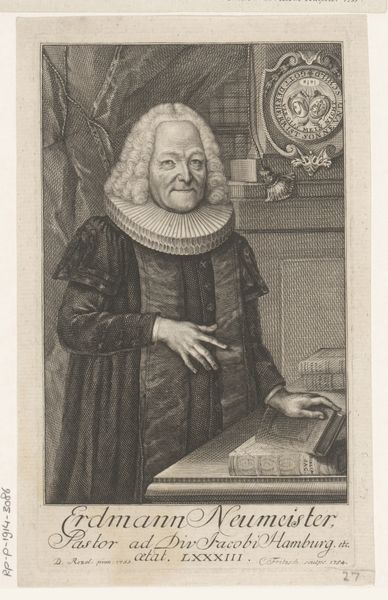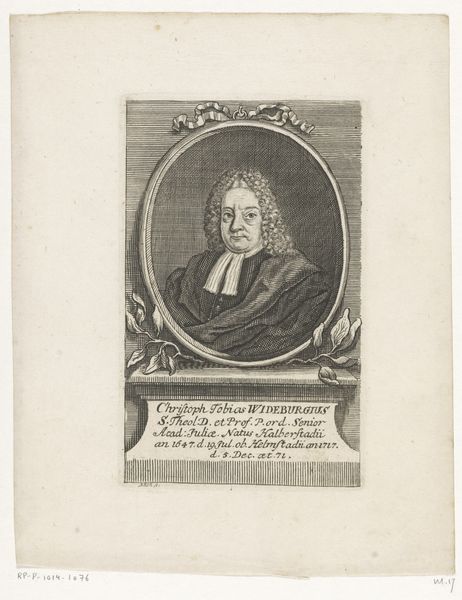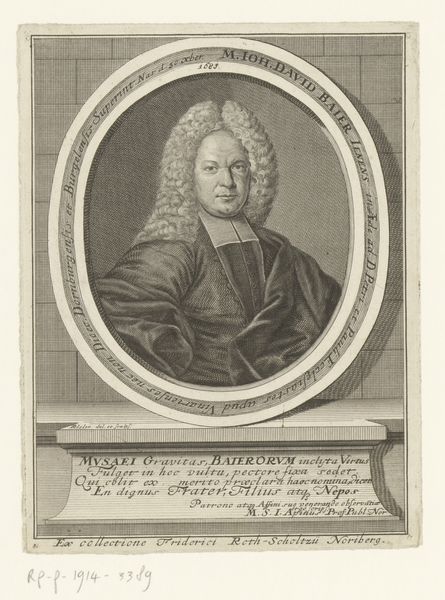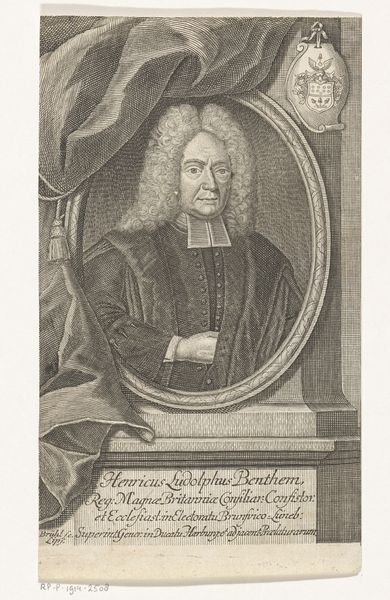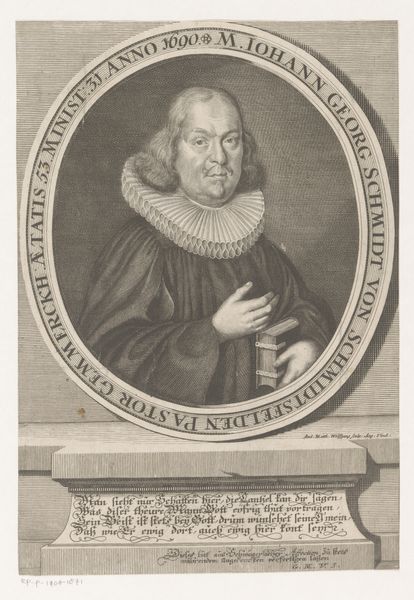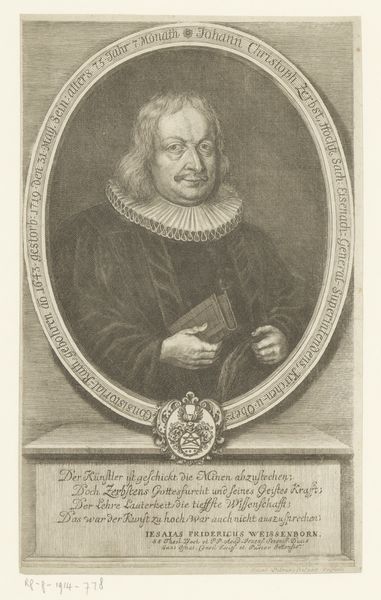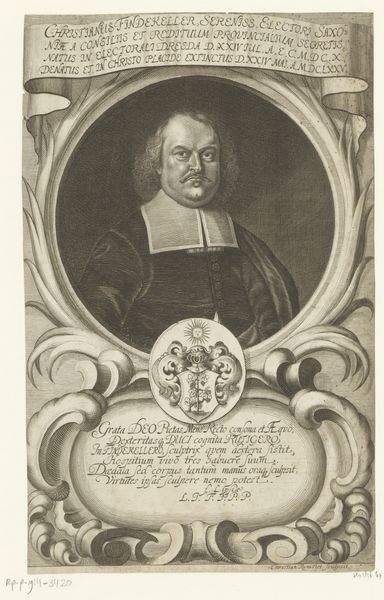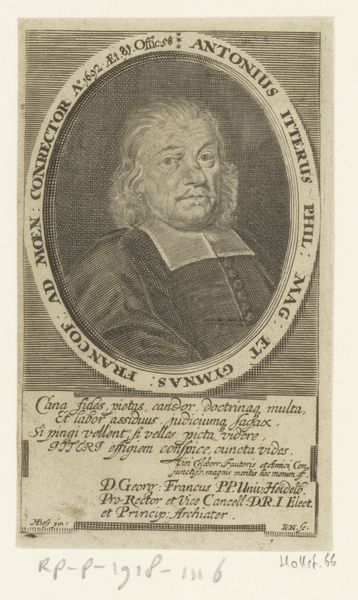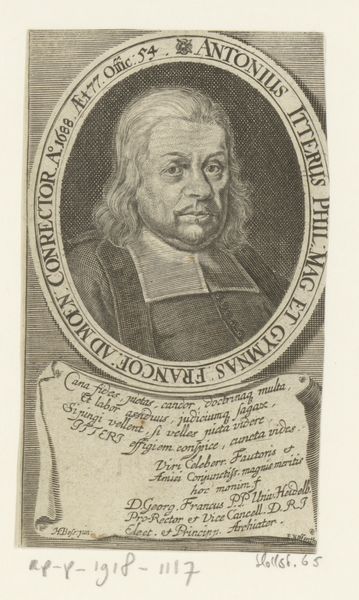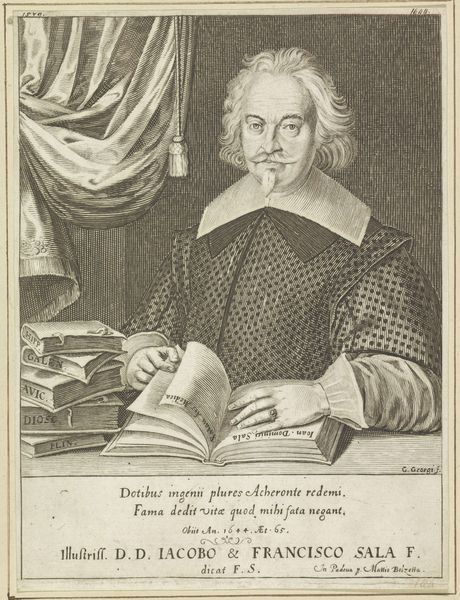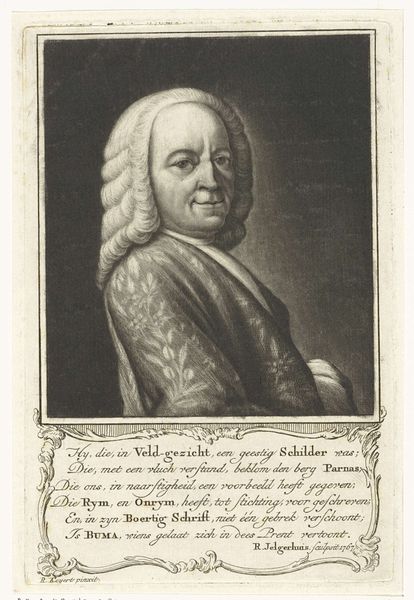
engraving
#
portrait
#
baroque
#
dutch-golden-age
#
figuration
#
line
#
engraving
Dimensions: height 179 mm, width 127 mm
Copyright: Rijks Museum: Open Domain
Curator: Here we have Cornelis van Noorde’s 1752 engraving, "Portret van Jacob de Bucquoy," currently residing in the Rijksmuseum. What are your initial impressions? Editor: It has an intriguing weight to it, this Baroque portrait, a real sense of history etched right onto the page. The line work feels incredibly precise. Curator: The meticulous quality of the engraving really speaks to the values of the time. Notice the artist’s choice to frame Bucquoy in an oval cartouche, a very classical structure to contain the figure, setting him apart from the surrounding rectangular border that grounds the whole composition. Editor: Right. And Bucquoy’s holding a pair of dividers, seemingly measuring a globe. Immediately signals navigation, exploration… an age of discovery condensed into one image. Sort of radiates a sense of order, knowledge meticulously charting out the world. Curator: Precisely. This portrait adheres to many conventions of Baroque portraiture, especially regarding status and intellect. But even the text inscriptions bordering the image carry substantial importance; we can see, for example, his birth year is meticulously recorded. Editor: You're right, and those inscriptions, the almost lyrical script, and ornate borders do add layers of information to the engraving. The overall feeling is of an important person memorialized, yet not necessarily from a perspective of intimacy, more… objective importance? Curator: I agree; it aims to document, to solidify his intellectual contributions. Van Noorde, in creating this line engraving, is consciously participating in an intellectual project. This artwork functions not merely as a likeness but as a formal claim to Bucquoy's standing within scientific and exploratory circles of his time. Editor: It does capture that moment nicely, a feeling of both grand exploration and this intense, almost academic, pursuit of knowledge. Feels weighty but full of curiosity. It makes me wonder who would have seen this engraving back then… What conversations did it start? Curator: An excellent question, because thinking through circulation and audience gets us closer to fully understanding what the print’s presence meant. I'm leaving this experience really thinking about lines as language and form in action, almost like scientific data made beautiful. Editor: For me, I walk away feeling connected to those distant quests for discovery, wondering how accurately any of us ever "map" ourselves. Still a pertinent question, really, despite the obvious precision of it all.
Comments
No comments
Be the first to comment and join the conversation on the ultimate creative platform.
